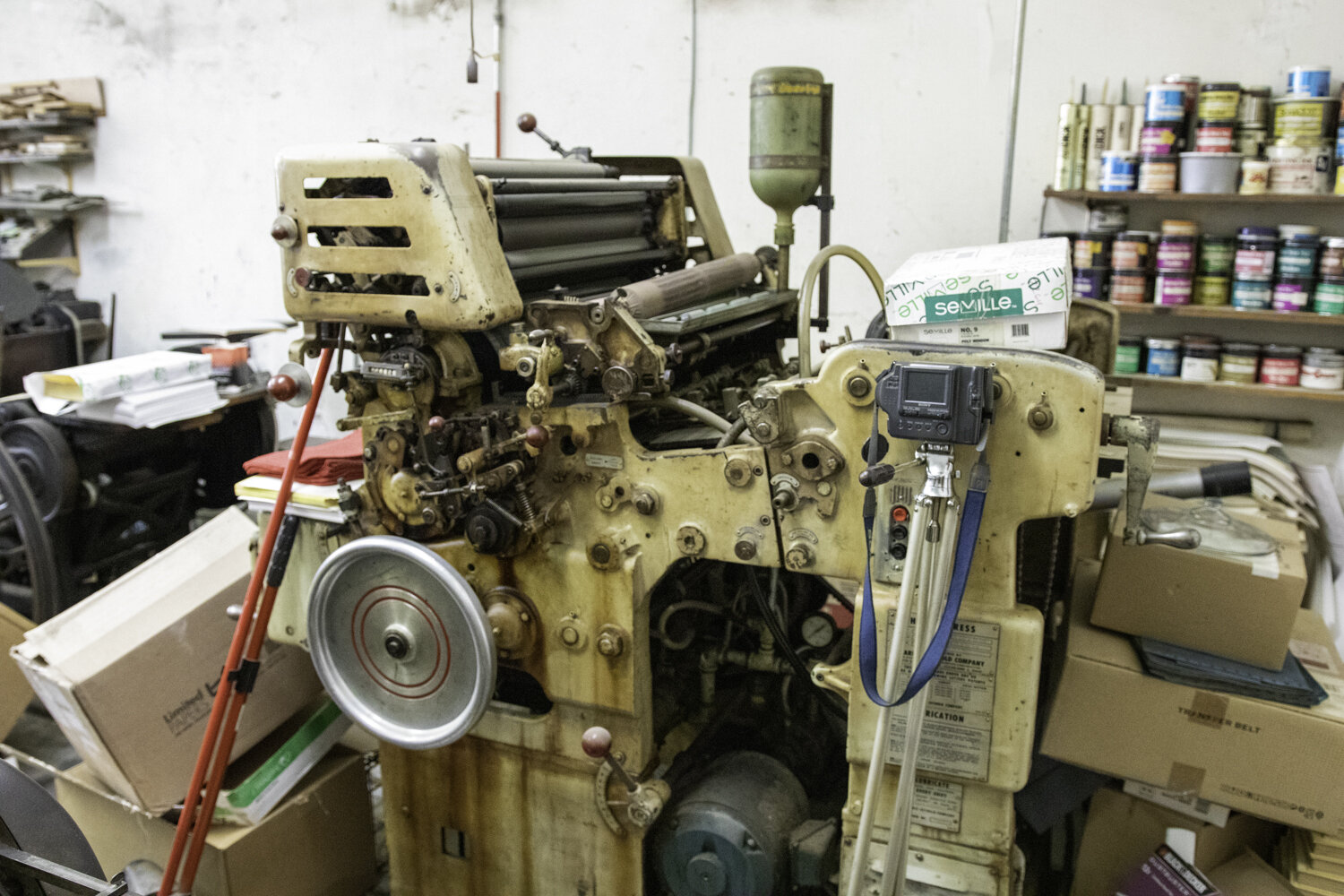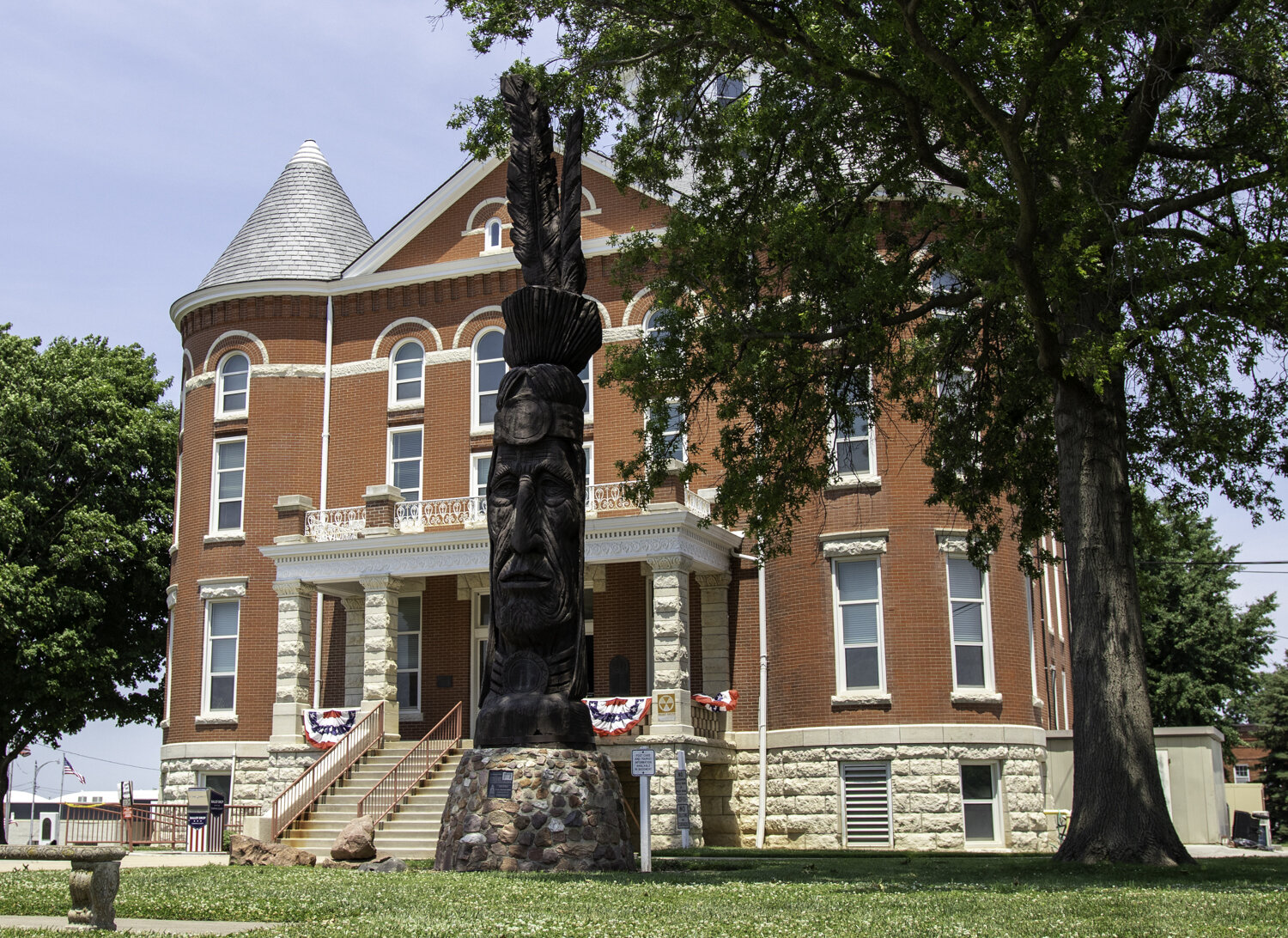Will Small Town Life and Rodeos Become Obsolete?
Troy, KS — Inside Trojan Graphics on Walnut street, I chatted with the owner, Larry Barnthson, whose cluttered shop is filled with ancient printing machines, tools, inks, and a huge graphics camera with a bellows. It could be a museum of mid-20th century print technology except Larry says he still uses all these machines. Though many of his peers undoubtedly have retired, and his only modern technology consists of a late-model iMac and 2 inkjet printers, Larry owns one of the few surviving businesses on the town square.
It’s no secret that small towns in the US — and perhaps especially in Kansas — are dying. Chain stores, casinos and fast food restaurants have replaced many locally run businesses, which means that profits leave town as quickly as most of the young adults who grow up there.
Larry’s a lifelong resident of Troy. He grew up on a hog farm south of town and later got a job at the newspaper (now defunct, as are most small-town papers) where he learned the printing trade. For a while, he also ran the projector at the movie theater, which closed way back in 1954, a casualty of the sudden popularity of broadcast television.
Outside, in the midday heat of a Thursday, the town square, with its quaint brick streets, is deathly quiet. Troy still has a bank, a gas station, a grocery store (there used to be six of them), and thanks to a grant from the state, a nicely updated public library. There’s a pleasant breakfast-lunch restaurant called The Feed Bag, and just a few blocks away, a locally-owned sports bar called Rookies opens at 5 p.m., seven days a week. There’s also a health clinic, a rarity in a town this size. Troy’s population has remained relatively stable for the last 10 years, and so far, it hasn’t been forced to consolidate its school system with those of other communities. (Go, Trojans!)
I mentioned to Larry that there seem to be an unusual number of law offices for a town with a population of 892. “The lawyers are here because we’re the seat of Doniphan County. Without that courthouse,” he continued balefully, “we’d probably be a ghost town.” Many of the other stores and businesses went under when residents began shopping at Walmart in St. Joseph, MO, about a dozen miles east. “People think they can save money by driving over there. They can’t,” he insists.
The next night, I returned to Troy to photograph the annual rodeo. I’m not a huge rodeo fan, having been to several as a kid, but I do like people and there’s something about these traditional community events from which I learn. I’m not always sure how to process and evaluate what I experience and that’s part of the reason I write about them — it helps to sort things out.
A few blocks west of downtown are situated the modest and well-maintained Doniphan County fairgrounds. Friday evening, despite temperatures nearing 100º F, a couple of hundred people arrive to watch the annual rodeo. Many are rodeo fans from around the county, and a significant number, from what I can tell, are here to support family members who are competing. They’ve come from places in Kansas, Missouri, Iowa, and Oklahoma. The skills needed in the individual events are barely, if at all, relevant to daily life on a ranch or in the livestock business, as some, like calf-roping and bronco-riding, once were. (I doubt if any sane person would try to ride a bull without being paid to do it. And even then…)
A lot of time during the rodeo is dedicated to presentation and performances by a mounted, female drill team, a ‘rodeo princess’, and John ‘Lefty’ Kee, the world’s only one-armed rodeo clown. The festivities begin, as you might expect, with a salute to every branch of the armed forces, a recorded version of the national anthem, and a heartfelt nondenominational prayer uttered by the MC. I didn’t find the crowd to be engrossed or responsive, and although the event was smoothly run by its production company out of Iowa, it didn’t draw any remarkable competitors. On the ‘fun scale,’ I’d have to put it at a 4 out of 10 (1 being an uneventful trip to the dentist).
I’m going to have to attend a few more rodeos and county fairs in order to reach conclusions about why rodeo’s still happening, but my initial take is that some people like dangerous sports and the jingoistic pageantry creates a buffer for the guilt about hoping to see someone get stomped on by a 1500-pound, pissed-off animal that’s barely evolved from the last ice age.
I spoke to several people in Troy who were only vaguely aware of the rodeo. Six miles away, in Wathena (pop. 1547), there was a 50+ dance party, a minor-league baseball game, and a blacklight toga party. Is rodeo on the edge of obsolescence, in a subculture that is, itself, on the edge of obsolescence? Much more to talk about as I explore Kansas small towns in the next few weeks.
Comments welcome.














